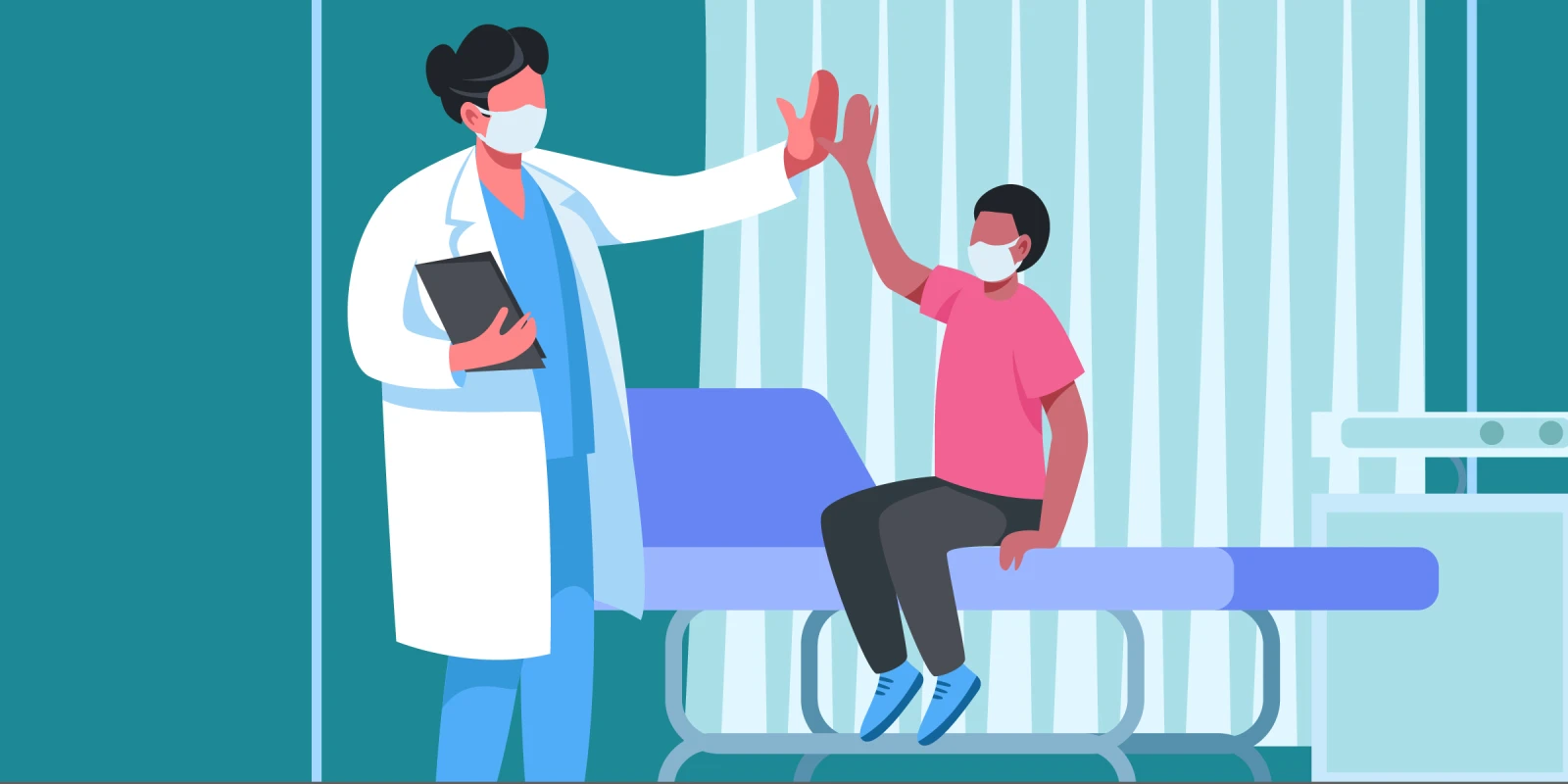I twirled my reflex hammer around my fingers as I walked across the hospital to the inpatient ward, past the giraffe elevators and the fish tank, weaving between the masked crowd of patients and families, doctors and nurses, all heading to their own destinations. There is something magical about children’s hospitals. The wall-to-wall murals of cartoons and sparkly, bright-colored floors somehow exude a sense of warmth and comfort, even in the midst of a global pandemic.
I was on my way to pre-round on a sweet pediatric patient with new-onset twitching episodes and dysarthria, which were concerns for seizure activity. Over the past few days, he’d been having increasing difficulty with speech production and comprehension, likely because the foci of his seizures overlapped with his language centers.
When I arrived at his room, I attempted a Montreal Cognitive Assessment (MoCA) to quantify his baseline cognition.
Modified Trail Making Test:
The patient followed the written pattern “1-A-2-B-3-4-C-D-5-E.” This took him several attempts. He continued to be frustrated by his inability to draw the correct pattern.
Copy of the Cube:
The patient could draw a rectangle but had difficulty with intercrossing lines on cube drawing. It was evident that he knew the concept of interlocking lines but was unable to replicate it by drawing.
I tried to move on to the next task, but he pulled the paper away from me and flipped it over to the blank side, drawing multiple half-constructed cubes over and over again.
“Hey, it’s OK, it’s OK,” I said. I applied gentle pressure on his shoulder, trying to reassure him.
He slammed the pen down, exasperated. We flipped the paper back over and kept going.
Draw Clock, Hand Placement:
The patient had difficulty creating a clock face large enough to fit all the numbers on the face. When asked to place the hands at 11:15, he was able to draw the hour and minute hands correctly.
Naming:
The patient named the lion correctly. But for the rhino, he said “lion” repeatedly and got increasingly frustrated at his inability to move past the first word. I saw tears welling up in his eyes as his frustration grew. The words seemed to be stuck on the tip of his tongue, fighting to get out. He clenched and unclenched his fists, shaking his head from side to side.
“I know you can do it," I said, patting him on the back. "It’s just hard to right now.”
Attention:
I read out a string of letters and asked him to tap his hand when he heard the letter “A.” On the third attempt, I read the whole string of letters. The patient did not tap his hand at all; he was aware that he had failed the task and became very distressed. He grabbed the pen and started drawing cubes over and over again. The lines just would not interlock. He started scribbling so furiously that ink stopped flowing from the pen. The sharp tip ripped through the paper as he let out a guttural scream.
I moved the table out of the way and kneeled down in front of him. I pressed both hands on top of his knees, firmly holding him down. “Hey, it’s OK,” I said. “You’re OK, you’re doing great. I know you’re frustrated, but there are no wrong answers on this test.”
I reached up and squeezed his hands tightly in mine as his body heaved with sobs. His face was scrunched up in distress, but his eyes were wide with fear. Two weeks ago, he was playing soccer with his friends, going to school on Zoom, and playing video games. Now, he was in the hospital, isolated from his friends and siblings, unable to complete tasks that had been so simple for him before.
“Come on, take a deep breath with me,” I said. “You’re OK.” I counted to 10. His grip on my hands tightened. I wished I could just hug his pain away. The nurse had heard the yelling and came in to check everything was OK. She gave him a push of lorazepam and rubbed circles on his back. The three of us stayed like that for a while, breathing deeply, in and out. Eventually, he calmed down and took a few sips of water. “I’m sorry buddy, you did great. I’ll let you get some rest.”
He tugged at my hand, shaking his head vigorously. “No. No!” He reached for the paper again. “I can do it! I can do it!”
His eyes were narrowed in determination now. I knew that the MoCA administration had failed, but I decided to try a different tactic. I started writing out commands. He had been unable to perform verbal serial sevens, but on written examination, he could answer all the questions.
I asked him to write out the day of the week, the month, the year, and the city. Each time, he got more and more excited. “Monday.” “8-24.” “Los. Los. Los.”
“Angeles, buddy,” I said. He looked up beaming, nodding his head vigorously. “I know you know,” I said, squeezing his shoulder. “You did great today. I’m really proud of you.”
I helped him swing his legs back in bed and tucked him in. As I stepped back out into the brightly colored corridor, I considered how much of communicating with our patients is about listening, not just to actual words, but to actions, facial expressions, gestures, and body language. We may not have been able to finish the MoCA tasks, but I walked away learning so much more about my patient’s concerns and cognitive status. I had seen the fear, frustration, and weariness in his eyes.
Our diagnostic tools can help us quantify and differentiate conditions, but ultimately, medicine is both a science and an art. The beauty of our profession lies in working to gain a better understanding of human emotion and continually develop a deeper sense of empathy.
What strategies have you employed to help patients through challenges? Share your experiences in the comment section below.
Priya Bhattacharjee is a fourth-year medical student at the Keck School of Medicine of USC, interested in pediatrics and passionate about working to support, educate, and empower patients and their families.
Image by getronydesign / Shutterstock







